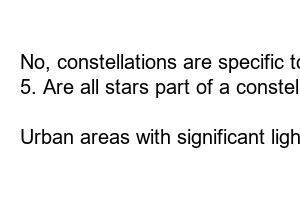별자리 찾는법
Title: How to Find Constellations: A Beginner’s Guide to Stargazing
Introduction:
Stargazing is a captivating hobby that allows us to explore the wonders of the heavens above. Among the most enchanting aspects of the night sky are the constellations, celestial patterns that have fascinated humans for centuries. In this blog post, we will guide you through the steps of finding constellations, transforming your stargazing experience into a thrilling adventure.
Subheading 1: Preparation is Key
Before embarking on your stargazing journey, make sure you choose a clear night with minimal light pollution. Familiarize yourself with the current position of the constellations and determine the ideal time for observation.
Subheading 2: Understanding the Sky Map
To navigate the night sky, use a sky map or a stargazing app, which can pinpoint the exact locations of stars, planets, and constellations. ★Pro tip: Familiarize yourself with the sky map before heading out to avoid getting lost in the countless stars!
Subheading 3: Identifying Constellations
Locating constellations can be challenging, but by learning a few key reference points, the task becomes much easier. Start by identifying prominent stars or asterisms, such as the Big Dipper, which is part of the Ursa Major constellation.
Subheading 4: Connect the Dots
Once you’ve located the reference points, it’s time to connect the dots and trace the constellation’s shape. Remember, constellations are like connect-the-dot puzzles, and using your imagination can help you visualize the intended pattern.
Subheading 5: The Importance of Dark Adaptation
Before you start scanning the sky for constellations, allow your eyes around 20-30 minutes to adjust to the darkness. This process, known as dark adaptation, will enhance your ability to spot fainter stars and trace the intricate patterns of the constellations.
Subheading 6: Explore with Binoculars
If you want to enhance your stargazing experience, consider using binoculars. Binoculars offer a wider field of view, allowing you to observe multiple stars and clusters within a constellation.
Subheading 7: Never Stop Learning
Stargazing is a continuous learning process. As you discover new constellations, take note of their names and distinctive features. Over time, you’ll build an impressive repertoire of celestial knowledge.
Summary:
In summary, locating constellations is an exciting endeavor that requires preparation, understanding of sky maps, and the ability to identify key reference points. With patience, practice, and the right resources, you’ll unlock a world of celestial wonders. Remember to allow time for dark adaptation and consider using binoculars to enhance your experience. Keep exploring, and the night sky will reward you with its ever-inspiring beauty.
————————-
FAQs
1. How many constellations are there?
There are 88 official constellations recognized by the International Astronomical Union.
2. What are some popular constellations?
Popular constellations include Orion, Ursa Major, Cassiopeia, and Scorpius.
3. Can constellations change position?
No, constellations maintain their positions relative to one another. However, they may appear to move throughout the year as Earth orbits the Sun.
4. Can I see constellations from both hemispheres?
No, constellations are specific to each hemisphere. However, a few constellations, such as Orion and Ursa Major, can be seen from both the Northern and Southern Hemispheres.
5. Are all stars part of a constellation?
Not all stars belong to a constellation. Constellations are composed of stars that form recognizable patterns.
6. Can I find constellations in urban areas with light pollution?
Urban areas with significant light pollution can make it challenging to see constellations clearly. However, using a sky map and finding the brightest stars can help identify constellations even in such conditions.

